|
HOME: www.hiltonpond.org |
|||
THIS WEEK at HILTON POND Subscribe for free to our award-winning nature newsletter (Back to Preceding Week; on to Next Week) |
WEST VIRGINIA FLOWERS (Dedicated to the memory of botanist and educator During the fourth weekend of August we were away from Hilton Pond Center and in West Virginia for our annual New River Hummingbird Festival, held this year at Hawks Nest State Park near Ansted in Fayette County. In our judgment, Hawks Nest is the hidden gemstone of the Mountain State's park system and deserves far more governmental support and public visitation, so we were pleased to be able be there once again for our hummer lectures and banding workshops. One of the great things about Hawks Nest is several lookouts that provide unsurpassed soul-soothing views of the New River Gorge (above left). We typically spend a lot of time with folks at these spots, pointing out birds that fly past, and it was exciting in August to look DOWN at an adult Bald Eagle as it glided majestically across the river. This year after our evening lectures and morning banding sessions we had afternoons open, so on the first day we took the Hawks Nest tram down to water level to see what we might see. All text, maps, charts & photos © Hilton Pond Center
All text, maps, charts & photos © Hilton Pond Center The first plant we encountered at the bottom of the gorge gave us a "two-fer"; i.e., a native wildflower AND a native pollinator: Sweetscented Joe-Pye-Weed (above), Eutrochium purpureum (formerly Eupatorium purpureum and sometimes referred to as Eupatoriadelphus purpureum). Although at first glance this plant doesn't look much like a sunflower, it's in that family (Asteraceae, formerly Compositae). Several Joe-Pye-Weed species occur in the eastern U.S.; their common epithet apparently comes from a Native American healer from New England who used his namesake plant to cure fevers and other ailments. As we watched this particular flower cluster, two inch-long insects with black wings and skinny orange abdomens flew in as one--attached at their posteriors in full mating posture. We recognized them as Thread-waisted Flies, Systropus macer, members of the Bee Fly Family (Bombyliidae). Adults eat pollen and nectar; in fact, the male continued to dine while the female just seemed to hang on. Their future larvae will parasitize caterpillars, especially those of Slug Moths.
All text, maps, charts & photos © Hilton Pond Center Growing near the Joe-Pye-Weed was a more typical member of the Composite Family, a four-inch wide sunflower on a thin three-foot-tall stem. Visible are the blossom's infertile "ray flowers" (the showy yellow structures--incorrectly called "petals") that attract pollinators, as are numerous tiny fertile "disk flowers" at center where seeds are produced. One problem with members of the Asteraceae is that a lot of them look a lot alike, making them the bane of botanists, beginners and otherwise. Just as there are LBJs ("little brown jobbers") and CFWs ("confusing fall warblers") for birders, there are DYCs, DWCs, and DBPCs for botanists. (Pardon our French, but those acronyms stand for "damned yellow composites," "damned white composites," and --one we just made up--"damned blue-to-purple composites.") We spent a lot of time fretting over the yellow composite in the photo above and may have been misled by what appears to be a smooth black stem, but we finally concluded the plant must be Rudbeckia laciniata, the Green-headed Coneflower, which--like the specimens we found--can grow to ten feet or more. (Let us know at INFO if you disagree--or even if you concur. Alas, we did not get a photo of the leaf.)
All text, maps, charts & photos © Hilton Pond Center Tall Blue Lettuce, Lactuca biennis (above), is another sunflower we found in New River Gorge. Native to the Northeast, it has become naturalized coast to coast across the temperate U.S. and Canada and even into Alaska. Blossoms may be blue to purple, white, or yellow. As its species name suggests, it is a biennial that flowers the year after germinating and producing a taproot; the main stem may tower as tall as 12 feet. A true composite, inflorescence of Tall Blue Lettuce is unusual in having ray flowers only; in place of the usual disk flowers are unadorned pistils and stamens (see photo). Although these wild lettuce flowers are hermaphroditic, plants that may be most successful attract pollinators like the insect above--a Small Carpenter Bee, Ceratina sp. After pollination wild lettuce sets feathery wind-borne seeds and dies after Year Two. The genus name Lactuca comes from the Latin word for milk, denoting a white, viscous sap that may have opiate qualities.
All text, maps, charts & photos © Hilton Pond Center Evening Primroses, Oenothera spp., are widely distributed across the Western Hemisphere--home to nearly 150 species. At Hawks Nest we found O. biennis, known as Common Evening Primrose (above) or--because of its four bright yellow petals--"Sun Drop." Flowers of plants in this genus open one day and close by noon of the next, hence the term "Evening" Primrose. (The image was taken late afternoon.) They also have specialized pollinators that may be active mostly after dark; this rules out Honeybees but includes moths. Some authorities claim Common Evening Primrose is typically self-fertilizing; thus, we're not sure if the Goldenrod Soldier Beetle, Chauliognathus pensylvanicus, on the primrose above is an actual pollinator or just an opportunistic insect out for free lunch.
All text, maps, charts & photos © Hilton Pond Center A four-petaled yellow flower growing in a moist ditch nearby turned out to be a second member of the Evening Primrose Family. This one was Bushy Seedbox or Rattlebox, Ludwigia alternifolia (above), so named because the distinctive seed pod is a small nearly cuboid box with a tiny top-hole through which seeds are dispersed. This native perennial grows across eastern North America from Hudson Bay to Florida and west to Colorado. It is one of several indicator plants for natural wetlands.
All text, maps, charts & photos © Hilton Pond Center Considerably easier to identify than the composites, we found a purplish-pink variety of Garden Phlox or Fall Phlox, Phlox paniculata (above), growing in a sunny spot along the trail. This plant grows so freely and easily some native plant enthusiasts have told me they thought it was an invasive non-native, but such isn't the case. It originated in the eastern U.S. but is cultivated extensively as an ornamental here and abroad. In the Polemoniaceae (Phlox or Jacob's-Ladder Family), Garden Phlox flowers have five overlapping petals that may be red, purple, pink, or white, with a darker center leading to a long tube that contains the reproductive parts. Butterflies and diurnal moths with extensible proboscises appear to be principal pollinators; some hummingbird fanciers swear Garden Phlox will attract their target birds as well as any nectar plant.
All text, maps, charts & photos © Hilton Pond Center One other pink flower growing in the gorge was Red Clover, Trifolium pratense (above), an import from Europe, northwest Africa, and western Asia that occurs ubiquitously across the Western Hemisphere. Although the genus name implies the plant has three leaves, these are actually leaflets; clover has compound leaves like typical members of the Pea Family (Fabaceae, formerly Leguminosae). As with many other "peas" (e.g., Soybeans, Peanuts, Alfalfa, etc.), Red Clover's roots have small nodules containing bacteria able to capture free nitrogen from the air and "fix" it in soil, thereby providing a natural means of soil replenishment. Fast-growing, Red Clover is "self-incompatible" and must be pollinated by insects--primarily long-tongued Bumblebees; it produces seeds 25-30 days later. Unlike many non-natives, this is a non-invasive plant whose benefits seem to outweigh any negatives. Oddly, it's the official state flower of Vermont.
All text, maps, charts & photos © Hilton Pond Center While photographing the Red Clover blossom we noticed something else pink and bright in the shade of a small but big-leafed shrub with smooth gray bark growing on a moist hillside. Turns out it wasn't a flower but the result of one, i.e., the unripe fruit of an Umbrella-tree, Magnolia tripetala (above). Many folks are familiar with Southern Magnolia with its massive white flowers and shiny, leathery, evergreen leaves. Umbrella Magnolia is a DECIDUOUS magnolia that grows most prolifically in more northerly latitudes or at higher elevations of the Appalachian Range. (We've seen Umbrella Magnolia in old woods in the Piedmont as far south as Chester SC, which must be the very edge of its southeasterly range.) This is an understory tree that in spring makes odoriferous white flowers with three sepals--not three petals as the species name implies. Each successful blossom gives rise to a four-inch-long green fruit that reddens and yields bright scarlet berries similar to those of the tree's magnolia relatives. (Umbrella-tree is sometimes confused with Cucumber Tree, M. acuminata, whose smaller curved fruit looks more like a gherkin pickle. WV naturalist and author Doug Wood tells us the two also can be differentiated by looking at next year's buds. If they're smooth like the one beside the fruit in the image above, it's Umbrella Magnolia; if the bud is covered with silvery-gray silky hairs, it's Cucumbertree.) Slow-growing, Umbrella Magnolia may take years to produce fruit. Pollination is apparently by insects, primarily Sap Beetles (Nitulidae).
All text, maps, charts & photos © Hilton Pond Center There were other flowers blooming below the lookouts at Hawk's Nest State Park, but light was failing in New River Gorge and we needed to catch the last run on the tram or spend a couple of hours walking out--all uphill. Nonetheless, we couldn't resist photographing American Bellflower (above), known divisively among botanists as either Campulanum americanum OR Campanulastrum americanum. It's a species we had seen in books but never observed in the wild. This plant--native to the eastern U.S. and southern Canada--is in the Campanulaceae (Bellflower Family); although it's not bell-shaped and doesn't look much like its relatives, it sits in the same family as Cardinal Flower and other lobelias. American Bellflower has five blue petals fused at their bases; each bloom bears five twisted white stamens and an elongated blue pistil, all of which lend themselves to pollination by long-tongued bees (especially Bumblebees and large Leaf-cutting Bees). Flowers occur at axils all along a tall, angular stem (up to six feet high), itself "armed" with prominent white hairs. Interestingly, bellflower seeds that germinate in autumn produce annual plants, while spring germination results in a biennial. We caught the tram in time, rode back up the slope to the lodge a Hawks Nest, had supper, and welcomed a bunch of inquisitive folks to our evening lecture about "Hummingbirds: From Your Home In West Virginia to Costa Rica . . . And Back!"
All text, maps, charts & photos © Hilton Pond Center On the second afternoon of the New River Hummingbird Festival we zipped over to Wolf Creek Park between Oak Hill and Fayetteville, home of New River Birding & Nature Center. We visit this sister site for Hilton Pond Center every several weeks to offer educational programs and supervise installation of nature trails and a unique Wetlands Boardwalk. True wetlands aren't very common in West Virginia; they cover only 1% of the state's topography--mostly because rapidly moving streams and rivers coursing down steep valleys are great for whitewater rafting but don't allow water to stand still. The beaver-maintained Wolf Creek wetland (see dam at center in photo above) is a rich and diverse habitat, but it's a harsh environment because of being sun-drenched. Even so, countless water-loving shrubs and herbaceous flora make it a delightful place to spend an afternoon--especially in late summer when flowering plants are at their showiest.
All text, maps, charts & photos © Hilton Pond Center Along the access road to the boardwalk we encountered a bright pink bloom standing four feet tall on inhospitable, gravel-laden soil. It was a Bull Thistle, Cirsium vulgare (above)--native to Europe, West Asia, and northwestern Africa but not to North America where it grows on disturbed ground in every state and nearly all Canadian provinces. (These days it's even found in Alaska and Hawaii.) This prickly plant--usually a biennial--is considered invasive in many locales where it competes with row crops and irritates grazing cattle; some states even call it "noxious." Nonetheless, Bull Thistle and our native thistles are excellent nectar plants for diverse insects such as the unidentified Flower Fly (AKA Hover Fly) above. Thistle is also a food source for American Goldfinches that feed thistle seeds to their chicks; these birds also use downy thistle seed attachments to line their nests. (Note: "Thistle" sold to attract winter finches is actually "Niger" seed from Guizotia abyssinica, another composite that originated in the highlands of Ethiopia; its flowers look nothing like those of a thistle.)
All text, maps, charts & photos © Hilton Pond Center Surrounding the Bull Thistle was a rather dense stand of one of the Goldenrods, Solidago spp. (above). Preeminent West Virginia botanist Dr. Earl Core listed at least 29 species of this native wildflower in the Mountain State, and he may have missed a few. With Goldenrod being a DYC and all, we hope you'll forgive us for not identifying the one in the photo down to species. (We do know it's not S. bicolor, the only white goldenrod; it's known as Silverrod.) Goldenrods have always been one of our favorite late summer/early fall wildflowers, if only because they so brighten the landscape as winter marches toward us. We also like the way Goldenrod is host to diverse insect pollinators, including those Goldenrod Soldier Beetles (above) we saw the day before on Common Evening Primrose at Hawks Nest.
All text, maps, charts & photos © Hilton Pond Center One never knows what one will find on Goldenrod, but we feel obligated to include at least one photo of a Honeybee (above) lunching on a Solidago flower head. Goldenrod's tiny yellow flowers are accessible to many kinds of insects that probe for sweet nectar and--in the case of the Honeybee--pick up a bunch of pollen along the way. Worker Honeybees, of course, have pollen baskets (corbiculae) on their hind legs, all the better to gather pollen grains for transport back to hungry larvae in the hive.
All text, maps, charts & photos © Hilton Pond Center Not far from the Goldenrod stand was a cluster of short, five-inch-tall plants with four-sided stems and pale purple-lipped flowers in tiers. Square stems and tiered flowers with lips? Sounds like a member of the Mint Family (Lamiaceae), and it was. This little mint goes by the seemingly pompous name of Heal-all, so-called because because it was used to treat all sorts of ailments: Fever, sore throat, internal bleeding, skin wounds, diarrhea, heart and liver problems, and sundry infections. Herbalists must have used it to medicate themselves, too, because its alternate name is Common Self-heal. The leaves are edible raw or cooked and contain numerous essential vitamins, while various extracts are being researched as treatments for allergies and AIDS. This wonder plant goes by the scientific name of Prunella vulgaris and is holarctic in distribution, occurring naturally all across the Northern Hemisphere. Because Heal-all is so common most folks think of it as a weed. By our definition that means it's a plant whose virtues have not yet been discovered.
All text, maps, charts & photos © Hilton Pond Center One plant well-known (but not clinically proven) for its medicinal value is Spotted Jewelweed, Impatiens capensis (above), a moisture-loving native species we found growing in muddy but exposed soil at the edge of the Wolf Creek Wetlands. This brilliant orange blossom--there's also a pale yellow species, I. pallida--is in the Touch-Me-Not Family (Balsaminaceae), so-called because its members make seed pods that literally explode when touched. Practitioners of folk medicine claim the juice of jewelweeds can be used to soothe effects of Poison Ivy rash, with higher marks given to a mash made from the plant's leaves; some folks go so far as to say drinking the milk of goats that feed on jewelweed will give a person immunity from ivy dermatitis. Properly used, jewelweed likely does have homeopathic benefits. It's interesting how it and Poison Ivy often grow side-by-side--which always makes for a nice nature story on field trips.
All text, maps, charts & photos © Hilton Pond Center Spotted Jewelweed does have spots on its flowers, but the rest of its common name apparently comes from the tendency of dew drops and rain to bead up on the plant's leaves to form little sparkling water jewels (above). This is especially true of the leaf's underside; hold the foliage underwater and the bottom of the leaf glistens like mercury. Spotted Jewelweed, an annual, bears a substantial nectar load when flowering in later summer and early fall--just when it is most useful for Ruby-throated Hummingbirds preparing to make their long southerly migration. Between hummers and long-tongued bees, Spotted Jewelweed sees to show high rates of fertilization--a fair enough return on providing energy-laden food for hungry hummers.
All text, maps, charts & photos © Hilton Pond Center Not far from the jewelweed a brilliant red flower stood out against the dark green vegetation of the wetland. Even from a distance we could tell this was Cardinal Flower, Lobelia cardinalis (above)--a relative of that atypically formed American Bellflower we had seen the day before at Hawks Nest. Cardinal Flower, a North American native that can grow to four feet, is the quintessential late summer hummingbird flower, and any Backyard Hummingbird (or Butterfly) Habitat without it and Spotted Jewelweed is essentially incomplete. European gardeners went ga-ga when botanical explorers to North America brought back samples of brilliant red Cardinal Flower in the early 17th century. They were disappointed when these supposedly perennial plants died after a half-dozen years but apparently were pleased to learn more could be propagated easily from seed. All text, maps, charts & photos © Hilton Pond Center Ahead of the Cardinal Flower was yet another yellow composite (above) whose roots were in standing water and whose flower heads were five feet off the ground. At first we offered this plant with half-inch blossoms as one of those DYCs for which we know no common or species name, but later heard from Doug Wood that it is Wingstem or Yellow Ironweed, Verbesena alternifolia. We can point out, however, how the yellow flowers were very attractive to insect pollinators. If you can't detect four individual insects visiting the flower head above, click on the image for a larger version. There were two Flower Flies (AKA Hoverflies), a solitary bee, and a wasp present at the moment we clicked the shutter. (Again, if you happen to know this plant, please send the common and/or scientific identification to INFO.)
All text, maps, charts & photos © Hilton Pond Center DYCs, DWCs, and DBPCs, indeed. The flower above might have qualified as a dad-blamed blue-to-purple composite, but we knew what it was: New York Ironweed, Vernonia noveboracensis (above). This plant flourishes in moist soils but seems to do okay in drier situations. In its prime in the Wolf Creek Wetlands, it's another of those composites with atypical inflorescence; in this case there are disk flowers but no ray flowers--unlike the previous day's Tall Blue Lettuce that had the reverse situation. (See why composites are so hard?) New York Ironweed is sometimes misidentified as Joe-Pye-Weed, but ironweed's flowers are deeper purple and its leaves are alternate along the stem. (They're whorled in joe-pye.) No one seems to know for sure where the name "ironweed" came from, except that the plant's stems are tough and its seeds are rusty in color. It occurs naturally in New York State and in most states east of the Mississippi River. Growing to seven feet, it gets the attention of foraging bees.
All text, maps, charts & photos © Hilton Pond Center Every flower pictured so far--don't count the Cucumbertree seed pod--has been from herbaceous flora, but there was one highly visible flower in the Wolf Creek Wetlands that adorned a woody shrub. Big two-inch white globes visible from quite a distance identified the plant as Common Buttonbush, Cephalanthus occidentalis (above)--one of our all-time favorite wetland plants that also grows at Hilton Pond Center. Common Buttonbush, in the Rubiaceae (Madder Family), grows only to about 12 feet in height but during late summer erupts with glowing white inflorescence that brings in pollinators from far and near. On the day of our visit there were dozens of Tiger Swallowtails (above) in the wetland; most spent extended time probing the buttonbushes.
All text, maps, charts & photos © Hilton Pond Center At one point, a buttonbush within reach of the telephoto lens of our Canon SX50 hosted three different pollinators (above): A very tattered Spicebush Swallowtail (bottom) and a much-smaller Red-banded Hairstreak (top right), plus a Honeybee zooming in from the right. We've also seen flies, solitary wasps and bees, social wasps, and other butterfly species feeding on Common Buttonbush nectar on the banks of Hilton Pond.
All text, maps, charts & photos © Hilton Pond Center Although we weren't able to get a photo of a Ruby-throated Hummingbird feeding on Buttonbush, we saw several individuals partaking of the nectar. Perched between flower visits, the one above is an apparent female with no throat streaking or red gorget feathers. Add Common Buttonbush to the list of suitable plants for your Backyard Hummingbird habitat--but only if you have a wet area.
All text, maps, charts & photos © Hilton Pond Center Those Tiger Swallowtails that were all over Common Buttonbush were pretty open-minded about where their next nectar fix originated. We also saw them on Goldenrod, Boneset, and--appropriately--on the flowering plant we've always associated with West Virginia riparian habitats: Joe-Pye-Weed. The day before we had seen and photographed Sweetscented Joe-Pye-Weed in the New River Gorge below Hawks Nest State Park, but around Wolf Creek grew a much taller and more robust species, Spotted Joe-Pye-Weed, Eutrochium purpureum (above)--the floristic "king of the wetland." This seven-foot plant is rivaled in height only by New York Ironweed and appears to have sweeter or more copious nectar that seems to attract more pollinators. As the name suggests, Spotted Joe-Pye-Weed has purple spots on a stem that is adorned by whorls of big leaves. All in all, it was a good couple of days photographing West Virginia flowers (wild and otherwise) and some of the pollinators they attract and feed. We got to put the Canon SX50 through its paces in macro mode and are mostly satisfied with the results. More important, we enjoyed a couple of special habitats in Fayette County WV and even encountered some plants we hadn't seen before. All in all, it was a pretty good way to spend a couple of "idle afternoons" away from Hilton Pond Center while in the Mountain State. All text, maps, charts & photos © Hilton Pond Center
All text, maps, charts & photos © Hilton Pond Center Despite all our field guides and the power of Google, we photographed one flower (above) at Hawks Nest State Park we simply could not identify. (It even stumped a couple of botanist friends.) An Antennaria species, perhaps, or a Hypericum with a cluster of extended stamens? We'd appreciate someone letting us know the correct common and scientific names of this mystery plant via e-mail to INFO. All text, maps, charts & photos © Hilton Pond Center All contributions are tax-deductible on your |
|---|
|
"This Week at Hilton Pond" is written and photographed by Bill Hilton Jr., executive director of Hilton Pond Center for Piedmont Natural History
|
|
|
Please refer "This Week at Hilton Pond" to others by clicking on this button: |
Comments or questions about this week's installment? Send an E-mail to INFO. (Be sure to scroll down for a tally of birds banded/recaptured during the period, plus other nature notes.) |


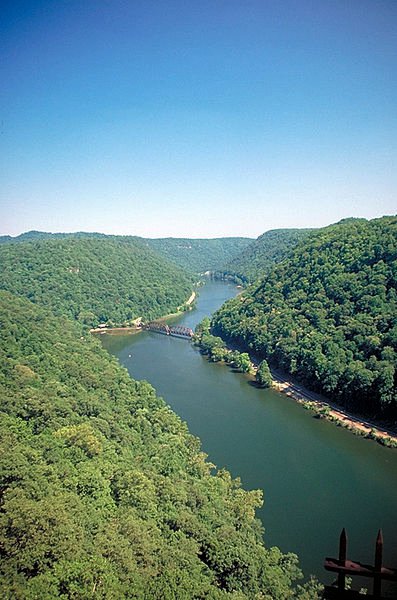 We made numerous new friends during the Festival and greeted some folks we know well--especially ever-faithful Pat Barker of Charleston WV who has been on FIVE of our Operation RubyThroat hummingbird expeditions to Central America.
We made numerous new friends during the Festival and greeted some folks we know well--especially ever-faithful Pat Barker of Charleston WV who has been on FIVE of our Operation RubyThroat hummingbird expeditions to Central America.  We brought our binoculars, of course, but also carried our point-and-shoot Canon SX50
We brought our binoculars, of course, but also carried our point-and-shoot Canon SX50 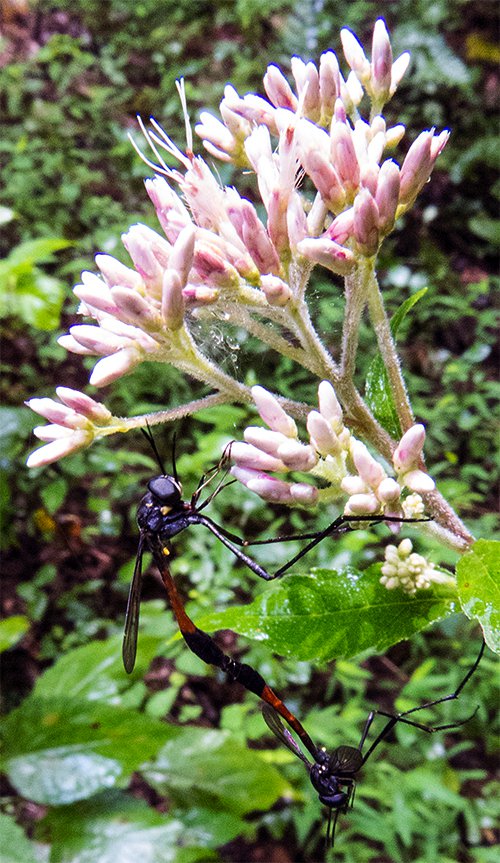
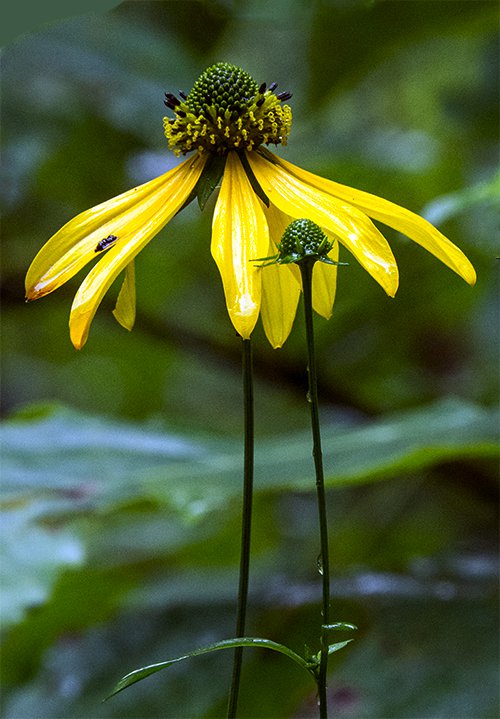
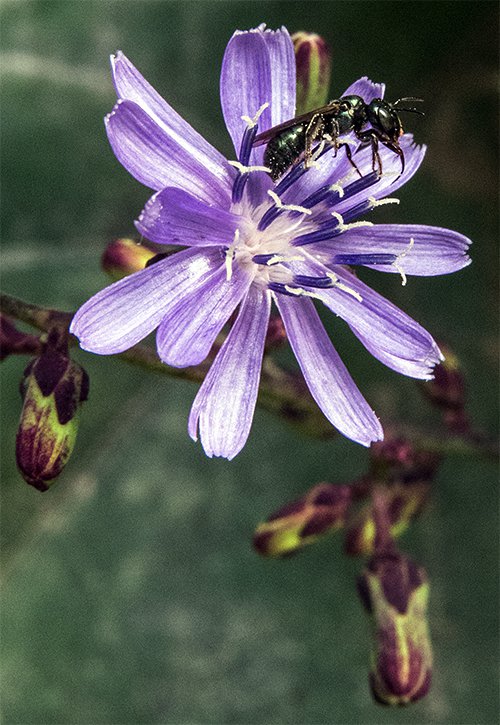
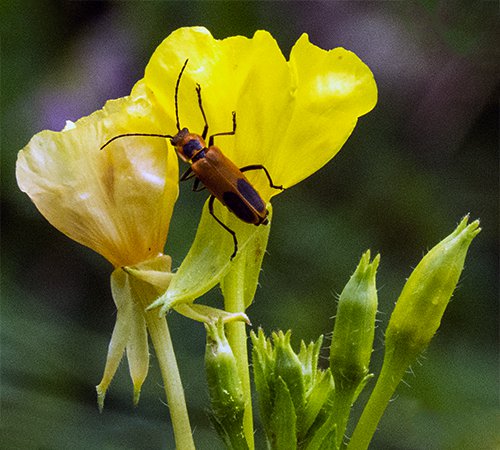
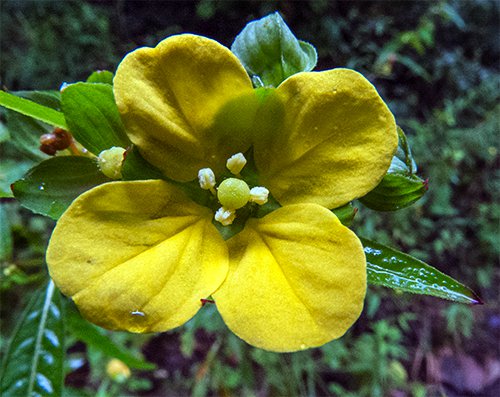
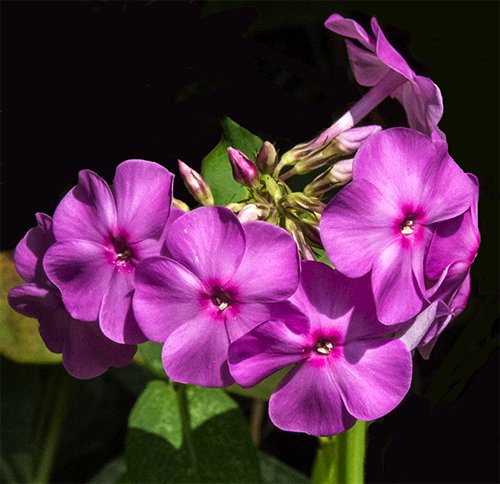
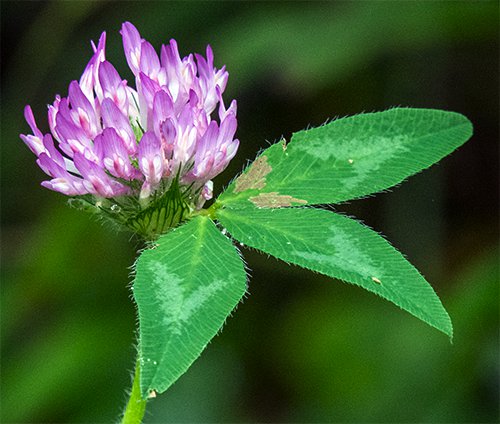
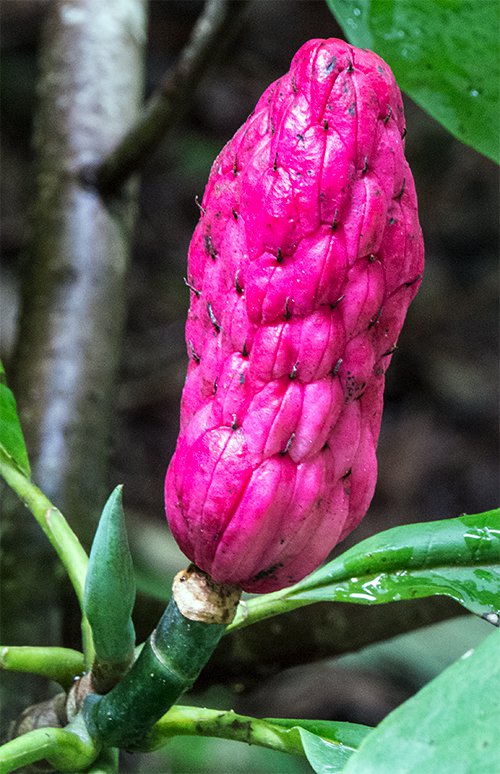


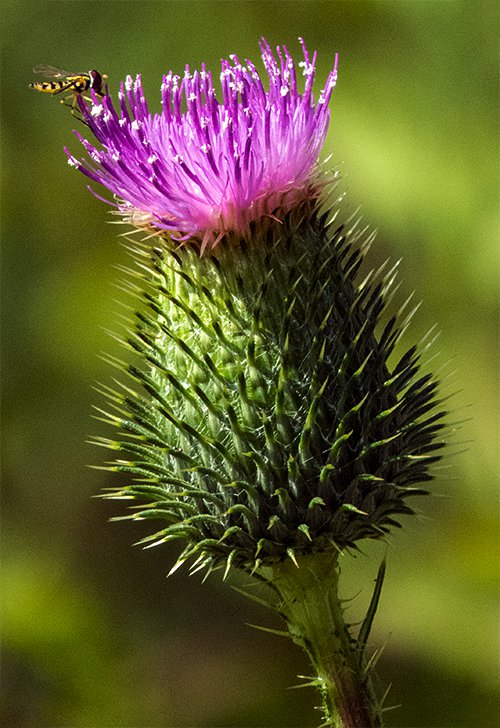
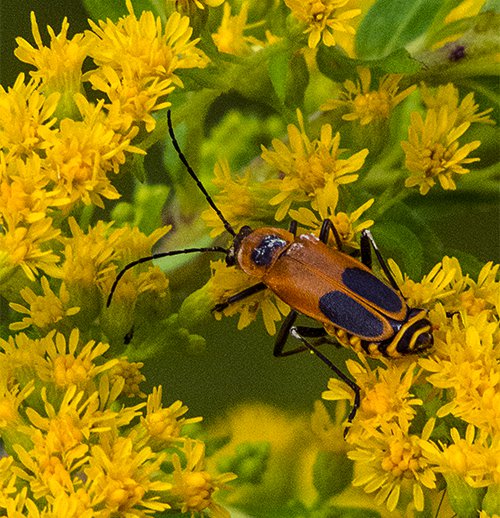
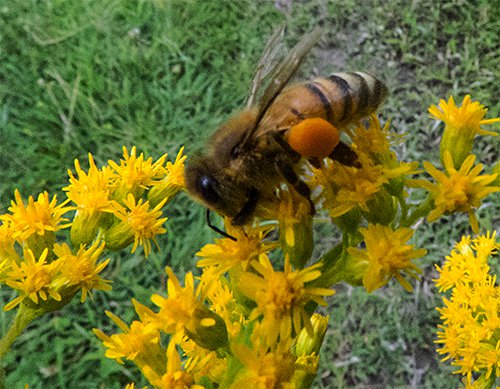
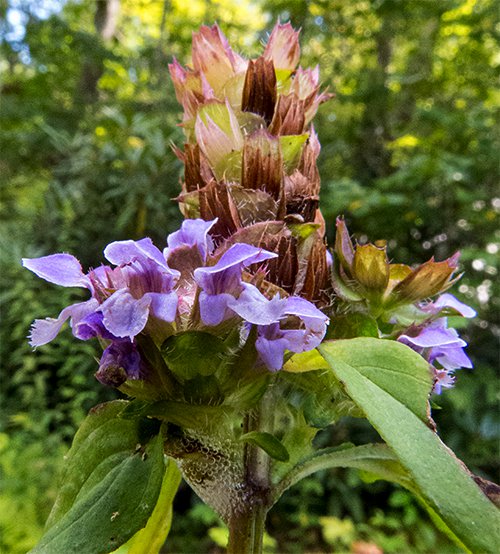
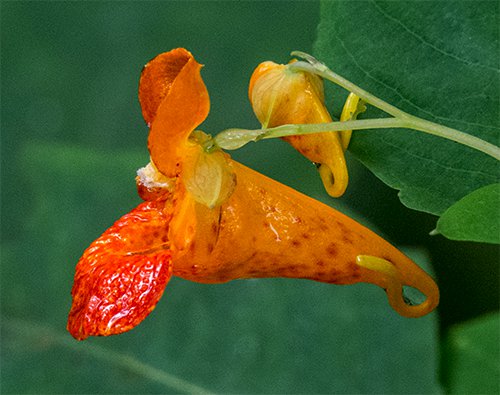
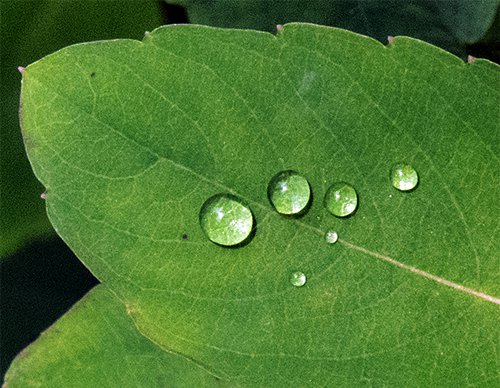

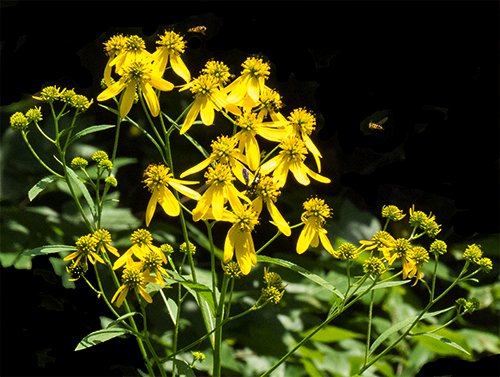
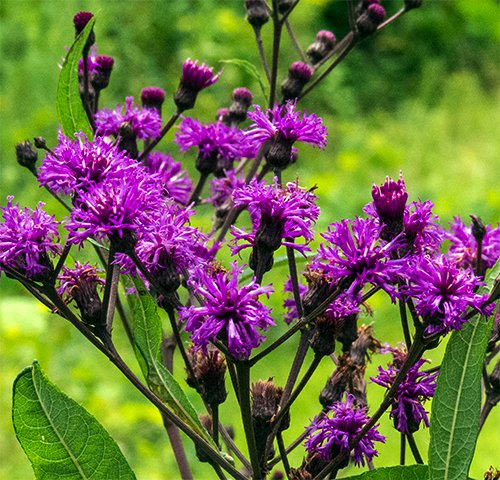
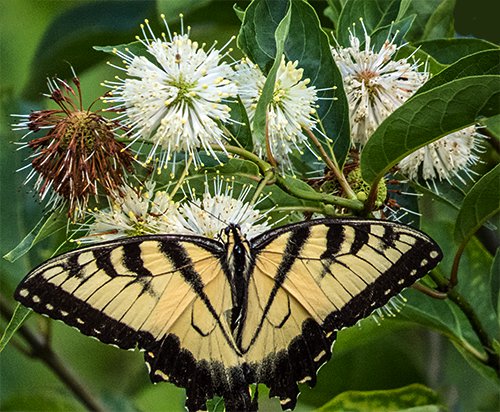

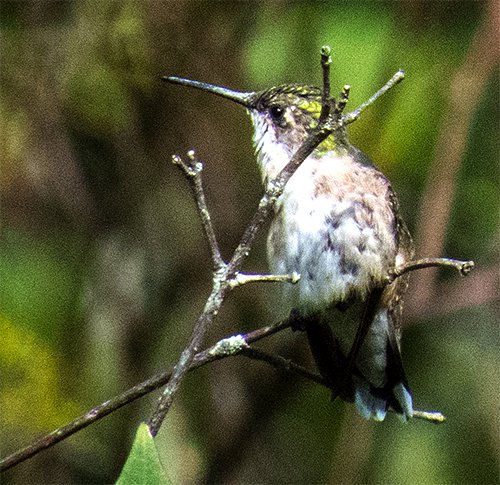
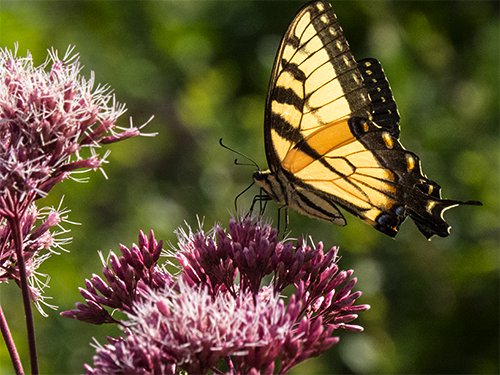
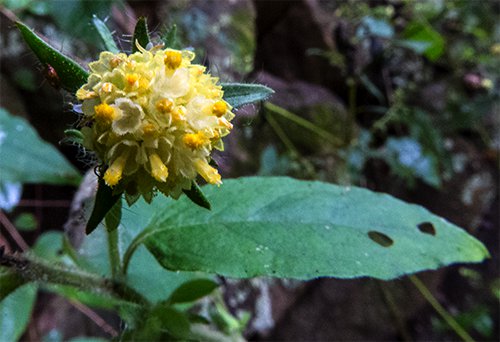


 Ken and Levi were veterans of our Operation RubyThroat hummingbird expeditions to Costa Rica-West (Guanacaste) in 2010 and to Costa Rica-East (Ujarrás) in 2011; both would have gone with us on another trip in 2012 had Ken not been weakened by his bout with two cancers, first prostate and then brain.
Ken and Levi were veterans of our Operation RubyThroat hummingbird expeditions to Costa Rica-West (Guanacaste) in 2010 and to Costa Rica-East (Ujarrás) in 2011; both would have gone with us on another trip in 2012 had Ken not been weakened by his bout with two cancers, first prostate and then brain. I first met him during a hummingbird workshop I led for volunteers at the University of Wisconsin-Madison Arboretum, where Ken was a senior (and beloved) docent who shared his vast knowledge of native plants with colleagues, students, and other arboretum visitors. He also was proprietor of Sand Ridge Floral & Hummingbird Co. through which he propagated dahlias and native plants--especially those attractive to hummers. Ken was exceedingly generous and in 2011 donated funds to underwrite TWO Operation RubyThroat expedition scholarships to Costa Rica-West. I was deeply moved to learn last month that as Ken came face to face with his destiny he made the generous gesture of sending another major donation in support of our on-going hummingbird research at Hilton Pond and in the Neotropics. These funds will be put to good use and will honor Ken's lifelong productivity. I will miss Ken Wood very much and offer my sincerest condolences to younger brother Levi and other family members and friends.
I first met him during a hummingbird workshop I led for volunteers at the University of Wisconsin-Madison Arboretum, where Ken was a senior (and beloved) docent who shared his vast knowledge of native plants with colleagues, students, and other arboretum visitors. He also was proprietor of Sand Ridge Floral & Hummingbird Co. through which he propagated dahlias and native plants--especially those attractive to hummers. Ken was exceedingly generous and in 2011 donated funds to underwrite TWO Operation RubyThroat expedition scholarships to Costa Rica-West. I was deeply moved to learn last month that as Ken came face to face with his destiny he made the generous gesture of sending another major donation in support of our on-going hummingbird research at Hilton Pond and in the Neotropics. These funds will be put to good use and will honor Ken's lifelong productivity. I will miss Ken Wood very much and offer my sincerest condolences to younger brother Levi and other family members and friends.




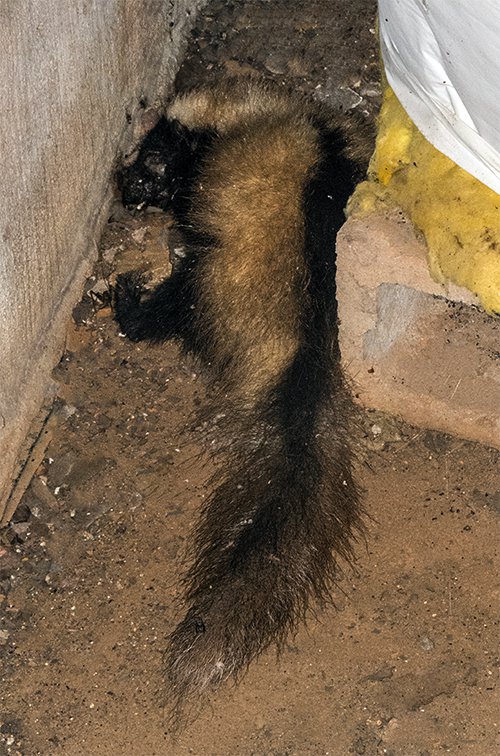
 Please report your sightings of
Please report your sightings of